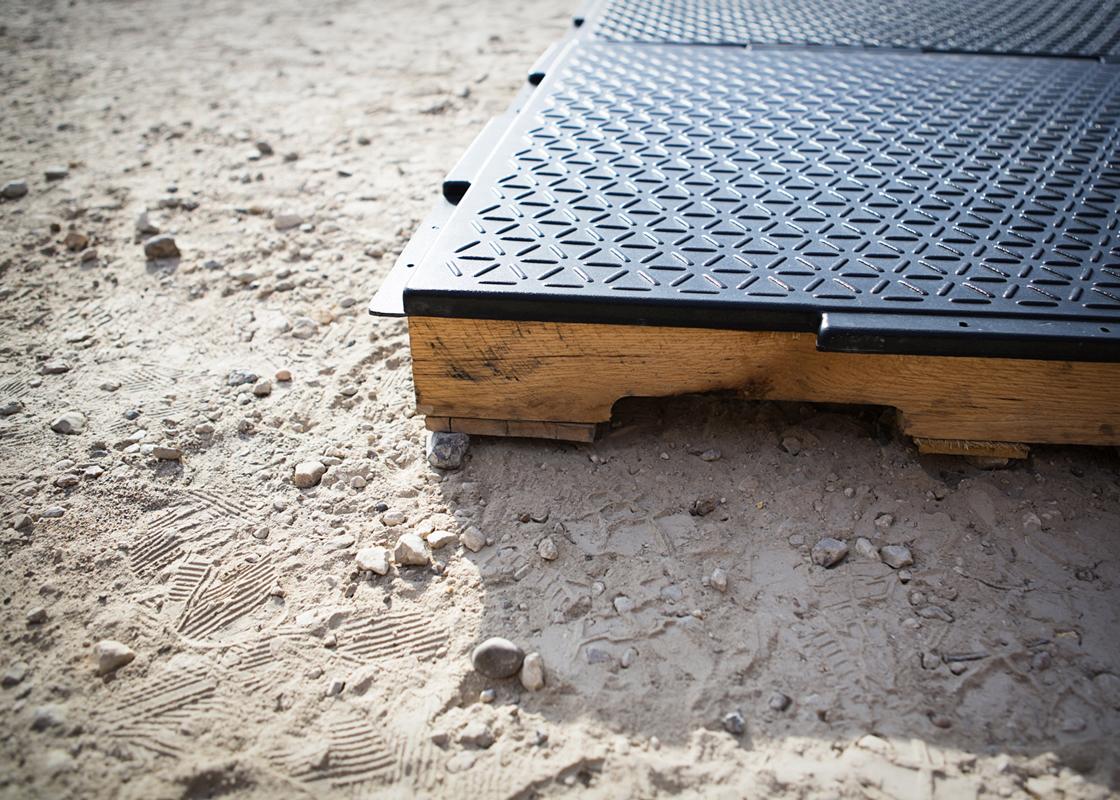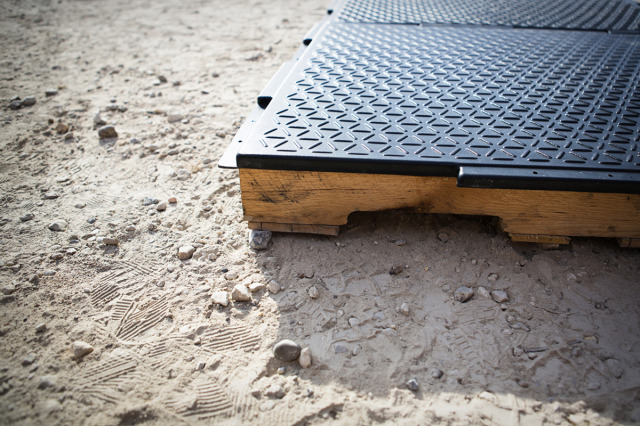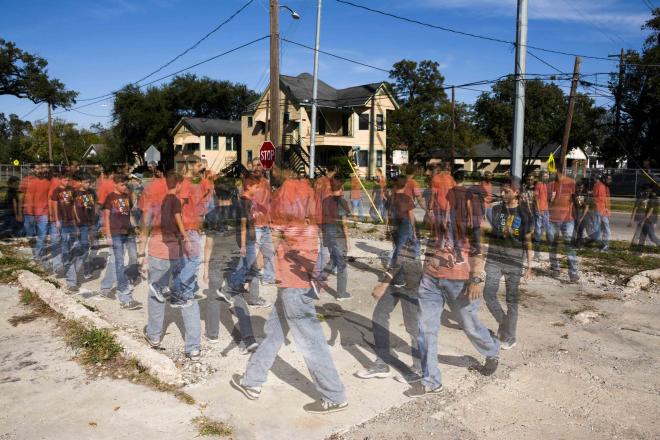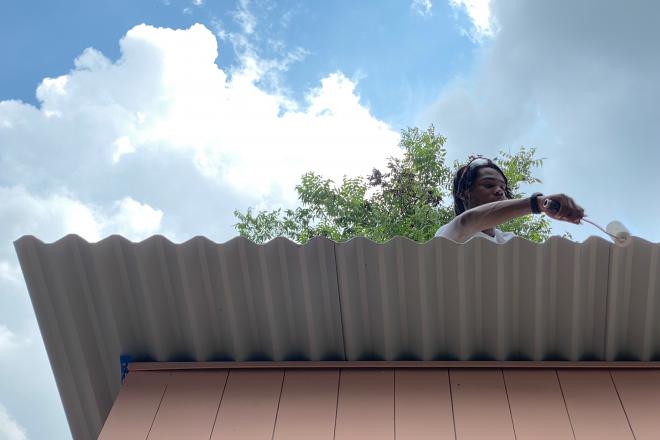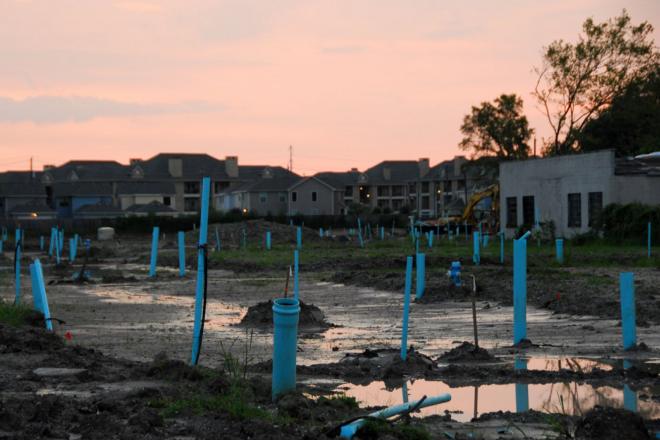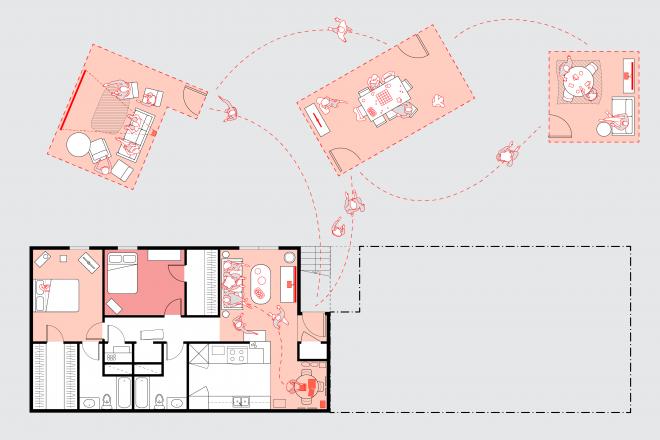Last year, 38 million refugees fled conflict and natural disasters. Many live in camps where tent-like shelters provide little to no barrier to the dirt below, exposing them to parasitic infections, flooding, waterborne diseases, and freezing temperatures.
“A floor under your feet is just as important as a roof over your head,” says Scott Key, who along with Sam Brisendine, developed Emergency Floor while students at the Rice School of Architecture. The project was selected as a finalist for a $150,000 grant from USAID’s Development Innovation Ventures. In order to quality for the grant, they must raise $50,000. Their crowdsourcing campaign ends July 15 and is $20,000 from reaching the goal.
The project's first phase, called Emergency Core, began in 2011 under the Rice Building Workshop and received a $2,500 from the Initiatives for Houston grant program of the Rice Design Alliance (publisher of this blog). While students, Key and Brisendine developed a full shelter, which they presented at the 2013 International Disaster Conference & Expo. It featured a shower, composting toilet, and solar power supply. The feedback from experts was that shelters abound but that an affordable flooring solution would fill an important need. So the team refocused their efforts on flooring as a building component that could fit into any shelter. Emergency Core become Emergency Floor.
The system uses modular tiles of extruded polypropylene that can be combined with various subfloors depending on what is available on hand at refugee camps, including shipping pallets and sand. As Mike Williams of Rice News explains, the team won more seed grant money from the John and Laura Arnold Foundation (through OwlSpark). An earlier, uninhabited pilot installation was mounted in Sweden in collaboration with BetterShelter, an IKEA subsidiary focused on reinventing the refugee shelter.
Buildings are increasingly like Wordpress sites with adaptable themes and various component "plug-ins." In their recent book Open Source Architecture, Carlo Ratti and Matthew Claudel compare the emerging role of architects to that of a "choral director." As opposed to the heroic architect who controls and details every aspect of a project---the Gesamtkunstwerk approach of resolving all the deficiencies, inefficiencies, and inadequacies of architecture in one swift stroke---the architect more and more has an "orchestrating function." With Emergency Floor, Key and Brisendine are not the choral directors but the creators of a plug-in. Though they have no formal partnership with IKEA's BetterShelter, which is like the operating system, Emergency Floor can be added to its structure as could other third-party components.
"Providing a canvas tent isn’t sufficient anymore," Key said in a phone interview. Many refugees live in "temporary" shelters for 10 years. So solutions have to be easily deployed and still have the potential to work for years. The modularity and flexibility of Emergency Floor, the ease with which it can be shipped and assembled, and its use of materials common at camps should play well in complex disaster relief efforts.
Donations to the crowdfunding campaign will be doubled by the USAID matching funds and go directly to pilot programs in Iraq and Nepal expected to begin this year.
Further Reading
Matias D. Cattaneo, Sebastian Galiani, Paul J. Gertler, Sebastian Martinez, and Rocio Titiunik. Housing, Health, and Happiness. American Economic Journal: Economic Policy 2009, 1:1, 75–105


